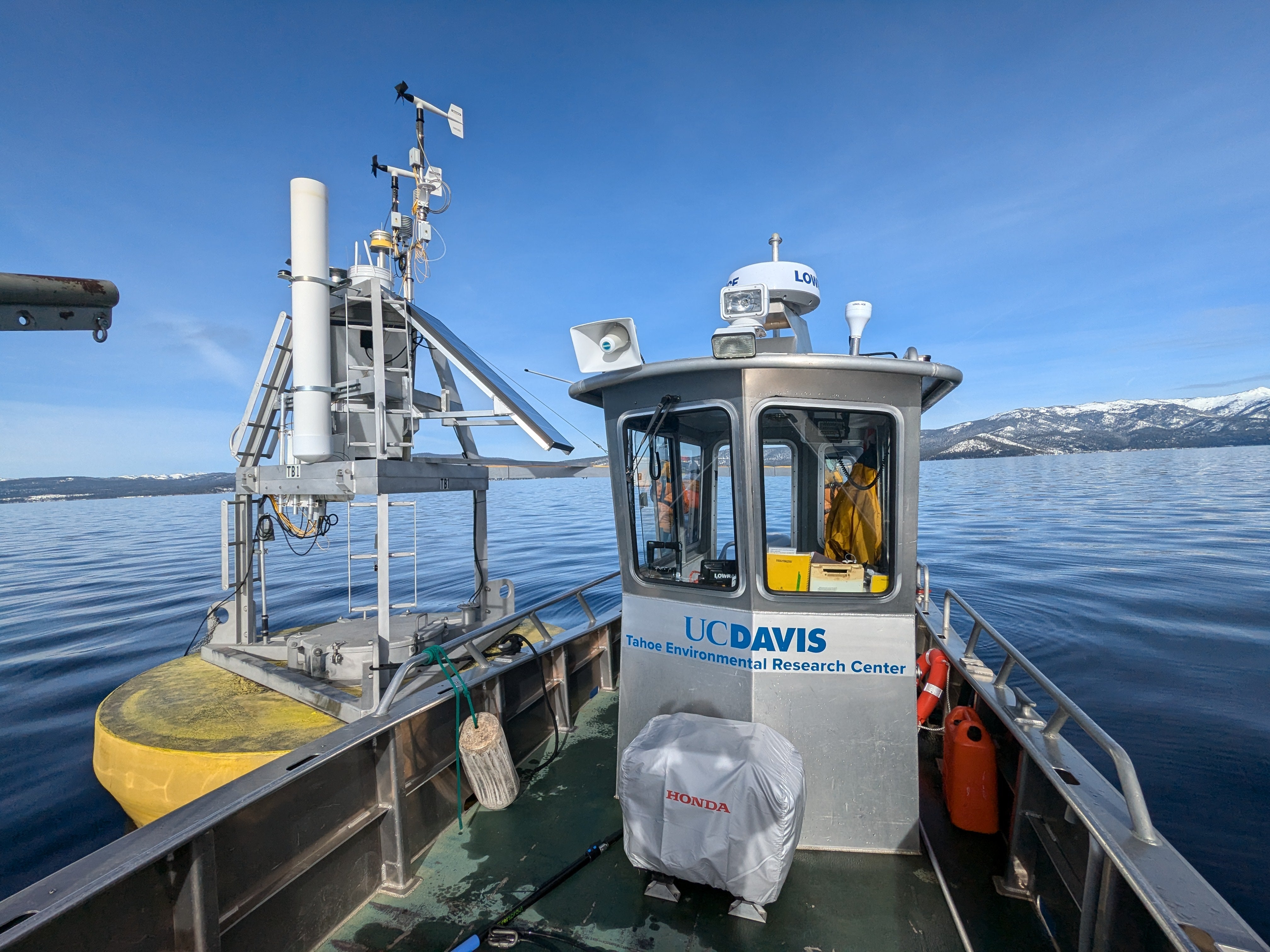The UC Davis Tahoe Environmental Research Center today released its "Tahoe: State of the Lake Report," which presents data from 2024 in the context of the long-term record.
Framed in a historical context amid past and ongoing environmental challenges, the report provides an annual update for non-scientists on the Lake Tahoe Basin's ecological health.
UC Davis has conducted research at Lake Tahoe since 1950, and scientists from UC Davis Tahoe Environmental Research Center have been monitoring conditions at the lake continuously since 1968. This has created a unique document of change for one of the world's most iconic and vulnerable lakes.
"As the new director of the UC Davis Tahoe Environment Research Center, I have had the opportunity this year to see our work on the magnificent Lake Tahoe ecosystem through fresh eyes," said TERC Director Stephanie Hampton, a professor in the UC Davis Department of Environmental Science and Policy. "We take this moment to examine not only the past and present state of the lake, but appreciate the infrastructure we have put in place that will enable us to explore new research frontiers."
Hampton will share report highlights during a live presentation and webinar today, July 17, at 5:30 p.m. PDT, at the UC Davis Tahoe Center for Environmental Sciences building in Incline Village. (Learn more and register.)
Highlights of the report include data related to temperature, precipitation, algae, water clarity and more.

Warmer, rainier and less snow
Lake Tahoe today generally experiences higher air temperatures, more rain, less snow and earlier snowmelt than it did 113 years ago, the report said.
There are 27 fewer below-freezing days than there were in 1911. Whereas snow made up half of the annual precipitation in 1910, it now comprises 30-40% of total precipitation. The 2024 Water Year (Oct. 1, 2023 to Sept. 30, 2024) had an annual average of 28.99 inches of precipitation, slightly below the long-term average of 31.4 inches.
Meanwhile, maximum temperatures have increased. In 2024, the annual average air temperature maximum was 57.4 degrees Fahrenheit, which is 2.8 degrees warmer than the previous year. The average annual minimum for 2024 was 31.8 degrees F, compared to 29.4 degrees in 2023.
Algae and water clarity
Periphyton, or attached algae, can create green, slimy rocks around the shoreline. In 2024, measurements of periphyton biomass were below average. However, monitoring individual sites from periphyton is difficult at Lake Tahoe due to intense wave action from year to year. TERC scientists just completed a two-year remote sensing pilot program to improve future coverage and accuracy of periphyton monitoring.
Earlier this summer, TERC released its 2024 Lake Tahoe Clarity Report, which it highlights in this report, as well. After major declines in water clarity through the 1990s, annual average clarity (62.3 feet in 2024) appears to have plateaued, the report notes. The authors said targeted research into the nature of clarity-reducing particles is needed to better understand why Lake Tahoe's clarity is not improving.
To learn more about the state of Lake Tahoe and ongoing research and educational outreach efforts, read the full report at www.tahoe.ucdavis.edu/stateofthelake.






